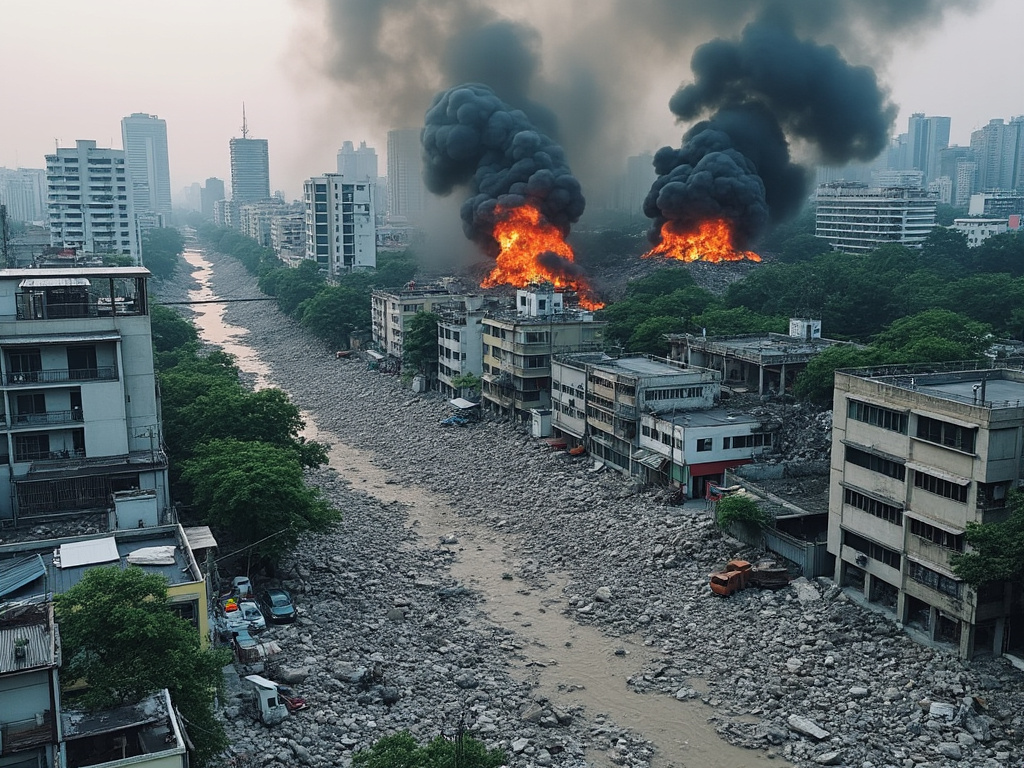
Government estimates highlight advancements in earthquake resilience amid ongoing disaster preparedness challenges.
Japan has revised its estimate regarding the potential impact of a megaquake along the Nankai Trough, projecting that up to 298,000 individuals could lose their lives in the event of a catastrophic earthquake of approximately magnitude 9. This information was released by the Japanese government on Monday, updating previous projections made in 2012 and 2013, which had estimated that 323,000 deaths could result from such an event.
The new estimate reflects recent improvements in seismic resilience, including enhanced quake-resistant structures and the establishment of tsunami evacuation facilities.
Nonetheless, this figure remains short of the government's aims, which include a target to decrease potential fatalities by 80% and to cut the number of damaged buildings by 50% by the conclusion of the 2023 financial year.
The Nankai Trough is an 800-kilometer (500-mile) undersea trench located off Japan's Pacific coast, extending from Shizuoka, west of Tokyo, to the southern tip of Kyushu island.
This trench marks the boundary where the Philippine Sea Plate is subducting beneath the continental plate that forms Japan’s landmass.
The interaction between these tectonic plates often leads to the accumulation of stress, which, when released, can trigger significant earthquakes, commonly referred to as megaquakes.
In another part of the region, the death toll from the recent earthquake that struck Myanmar and Thailand has risen dramatically.
As of Saturday, the 7.7-magnitude earthquake left over 1,600 dead, predominantly in Myanmar, with ongoing rescue efforts hampered by ruined infrastructure.
In Mandalay, one of the hardest-hit areas, rescuers are working tirelessly to locate survivors from under the debris of collapsed structures.
Thailand's capital, Bangkok, experienced significant devastation as well, with reports indicating that up to 100 construction workers remained trapped in a collapsed building.
At least ten fatalities were confirmed in Thailand, primarily at the construction site.
The earthquake, the most powerful to occur in the region in living memory, was felt as far away as Laos, Yunnan province in China, and Ho Chi Minh City in Vietnam.
Myanmar's ruling junta announced that the official death toll had reached 1,644, with injuries totaling 3,408 and at least 139 individuals still reported missing.
The epicenter of this seismic event was identified as being located in central Myanmar, approximately 50 kilometers (30 miles) east of Monywa and near Mandalay.
The quake struck at around 1:40 PM local time on Friday, causing widespread panic and damage, particularly in densely populated urban areas.
Concerns persist regarding the provision of timely assistance to affected regions, given Myanmar's challenging political and humanitarian context, coupled with logistical obstacles following the earthquake.
The new estimate reflects recent improvements in seismic resilience, including enhanced quake-resistant structures and the establishment of tsunami evacuation facilities.
Nonetheless, this figure remains short of the government's aims, which include a target to decrease potential fatalities by 80% and to cut the number of damaged buildings by 50% by the conclusion of the 2023 financial year.
The Nankai Trough is an 800-kilometer (500-mile) undersea trench located off Japan's Pacific coast, extending from Shizuoka, west of Tokyo, to the southern tip of Kyushu island.
This trench marks the boundary where the Philippine Sea Plate is subducting beneath the continental plate that forms Japan’s landmass.
The interaction between these tectonic plates often leads to the accumulation of stress, which, when released, can trigger significant earthquakes, commonly referred to as megaquakes.
In another part of the region, the death toll from the recent earthquake that struck Myanmar and Thailand has risen dramatically.
As of Saturday, the 7.7-magnitude earthquake left over 1,600 dead, predominantly in Myanmar, with ongoing rescue efforts hampered by ruined infrastructure.
In Mandalay, one of the hardest-hit areas, rescuers are working tirelessly to locate survivors from under the debris of collapsed structures.
Thailand's capital, Bangkok, experienced significant devastation as well, with reports indicating that up to 100 construction workers remained trapped in a collapsed building.
At least ten fatalities were confirmed in Thailand, primarily at the construction site.
The earthquake, the most powerful to occur in the region in living memory, was felt as far away as Laos, Yunnan province in China, and Ho Chi Minh City in Vietnam.
Myanmar's ruling junta announced that the official death toll had reached 1,644, with injuries totaling 3,408 and at least 139 individuals still reported missing.
The epicenter of this seismic event was identified as being located in central Myanmar, approximately 50 kilometers (30 miles) east of Monywa and near Mandalay.
The quake struck at around 1:40 PM local time on Friday, causing widespread panic and damage, particularly in densely populated urban areas.
Concerns persist regarding the provision of timely assistance to affected regions, given Myanmar's challenging political and humanitarian context, coupled with logistical obstacles following the earthquake.






































